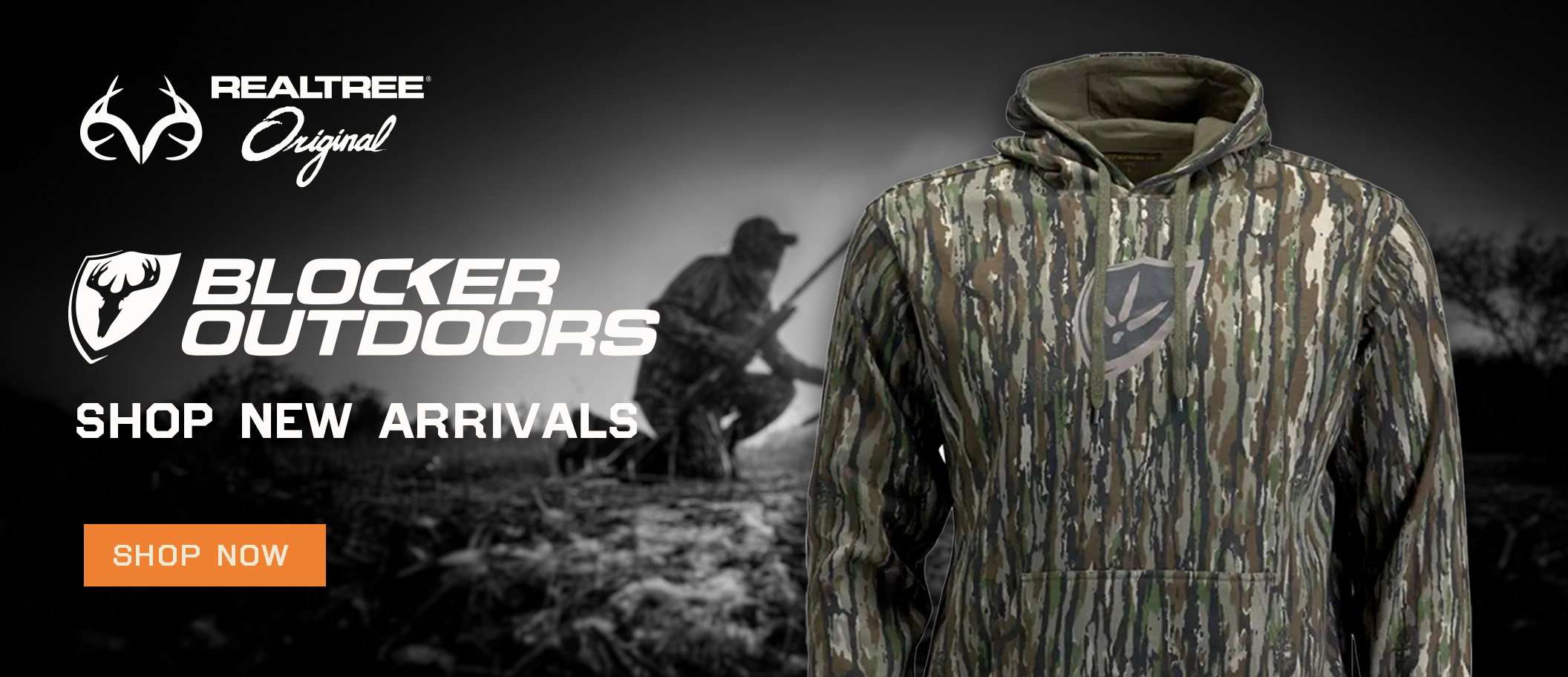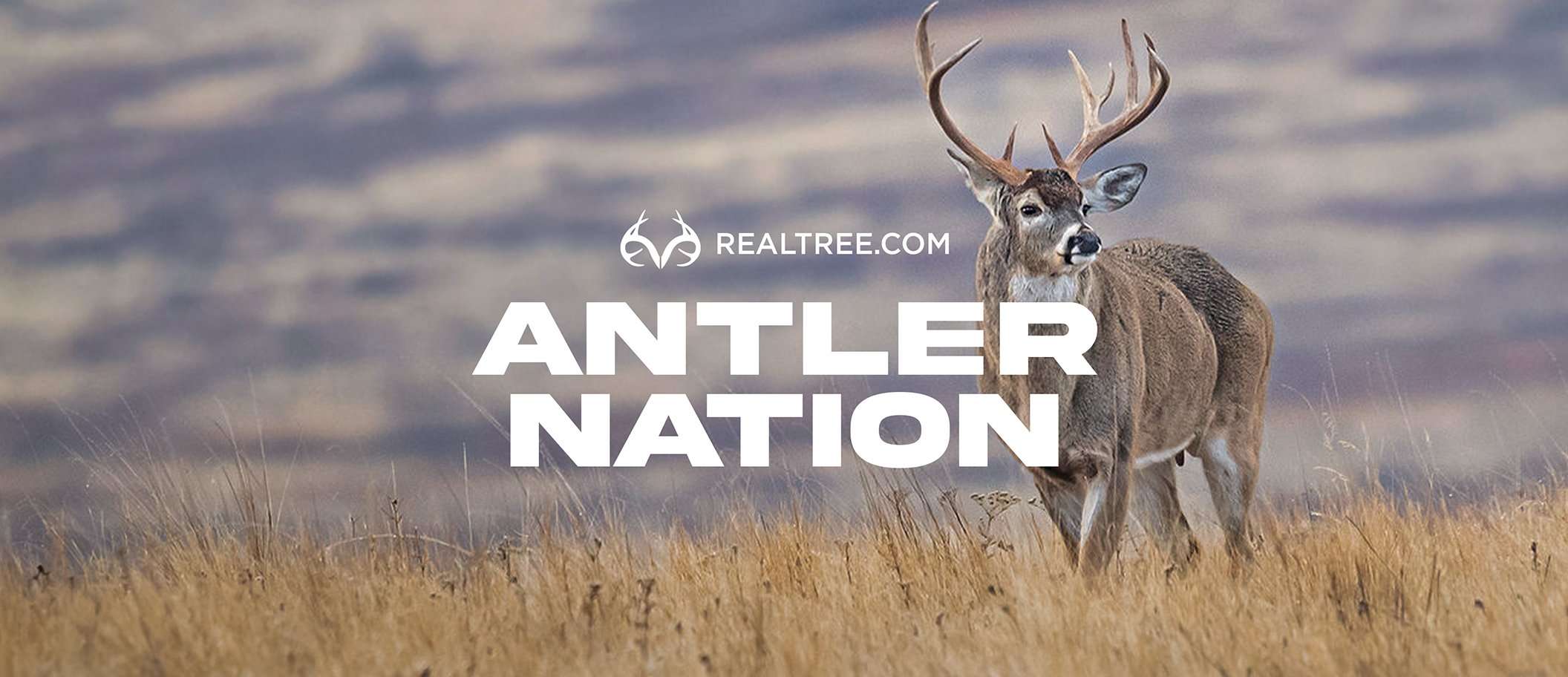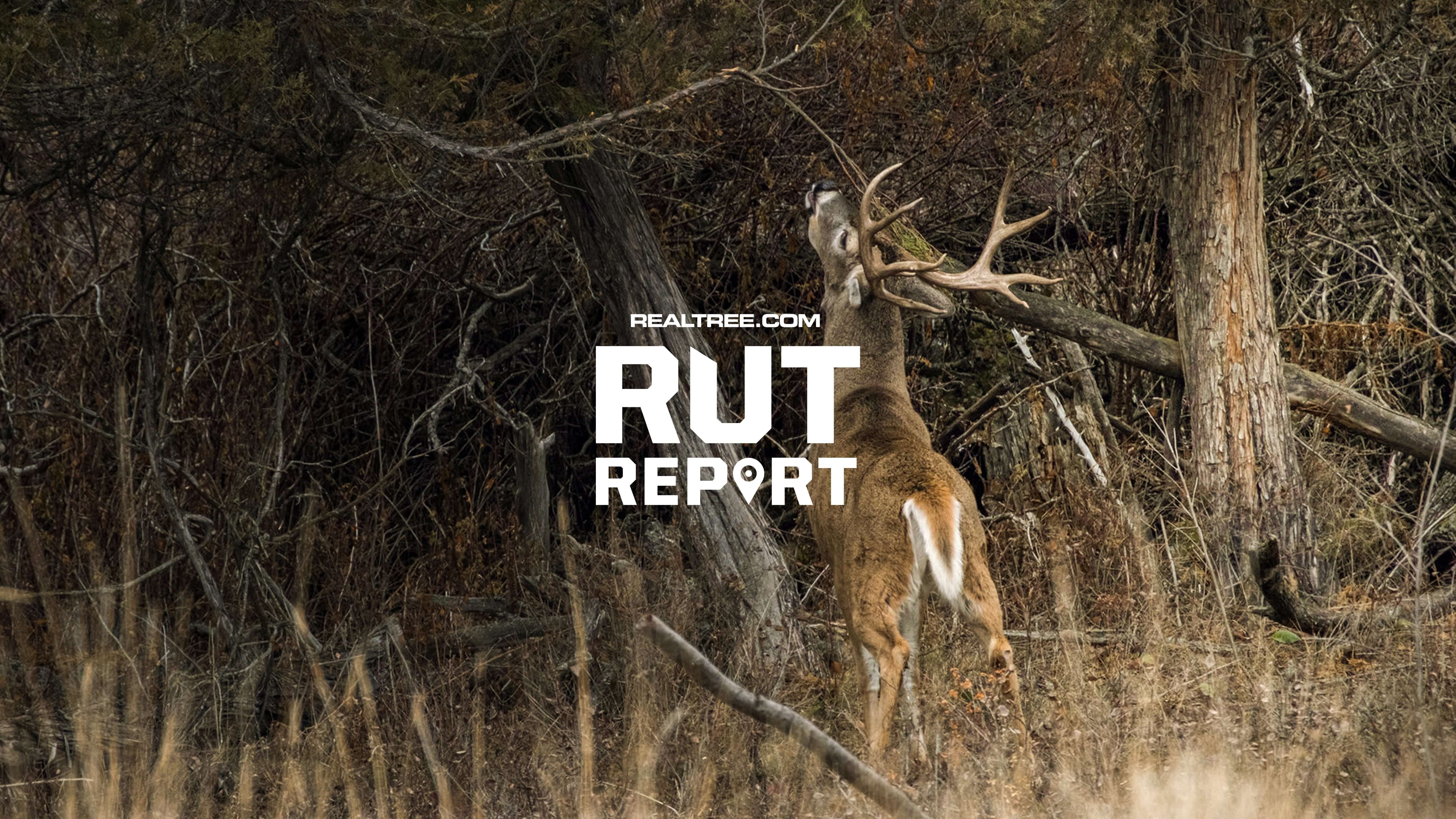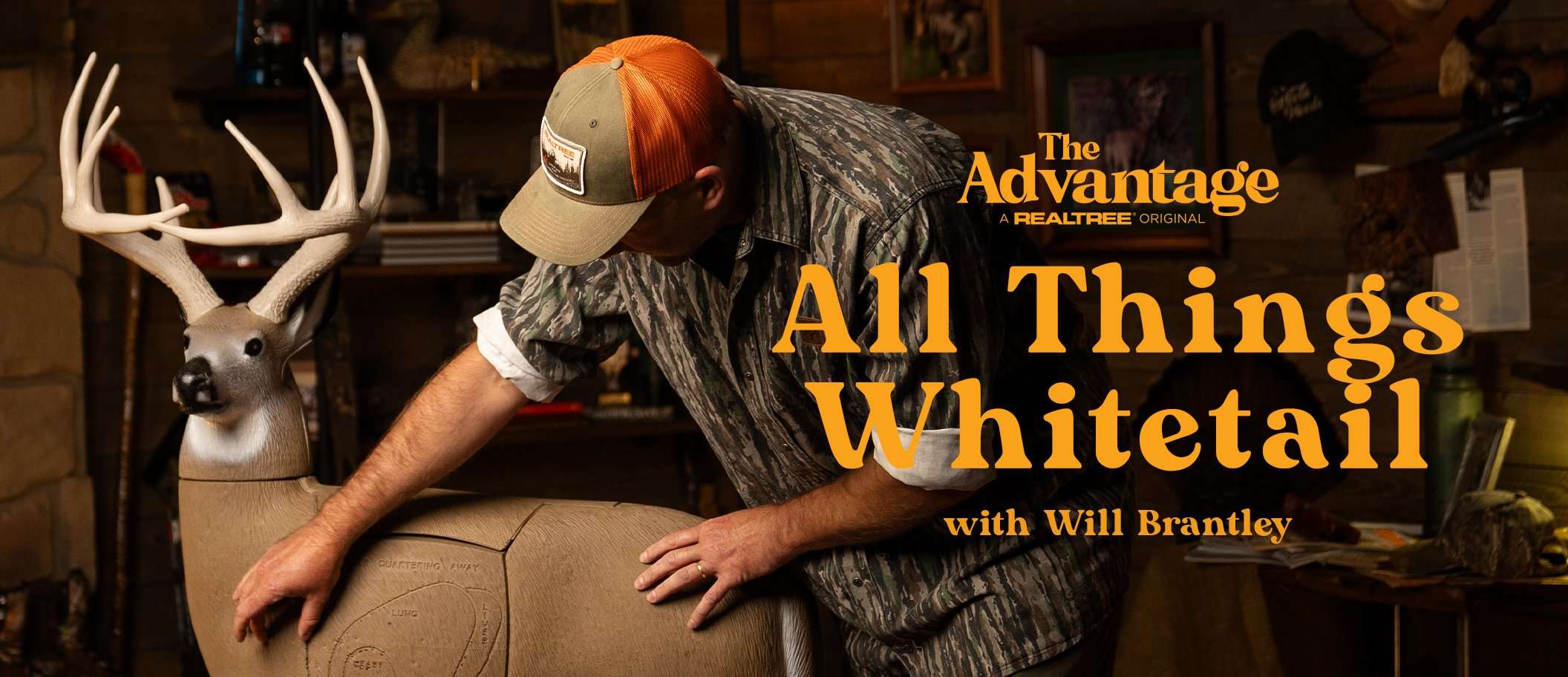With the right setup, a good over/under shotgun can be just as effective in the turkey woods as it is on the dove field or clays range
We’d seen the gobbler strutting with a dozen hens the evening before, and I figured we were in for a show the next morning. But two hours after daybreak, and we hadn’t heard so much as a peep. My 10-year-old son, Anse, had been drawn for a two-day youth-only hunt on a popular WMA, which a few turkeys around but lots of hunting pressure. My gut said to stay put because I knew the bird was nearby, but we weren’t hunting on my tag. I asked Anse what he wanted to do.
“Let’s slip around and try to get him to gobble,” he whispered. I agreed, and we were on the move, sneaking from just inside the treeline along the edge of the cut cornfield, where we’d seen the gobbler the evening before. I stopped every 150 yards or so to yelp and glass. Anse trailed behind me with his favorite shotgun, a CZ Quail 20-gauge, broken open in the crook of his arm, with a pair of TSS turkey loads at the ready in each chamber.
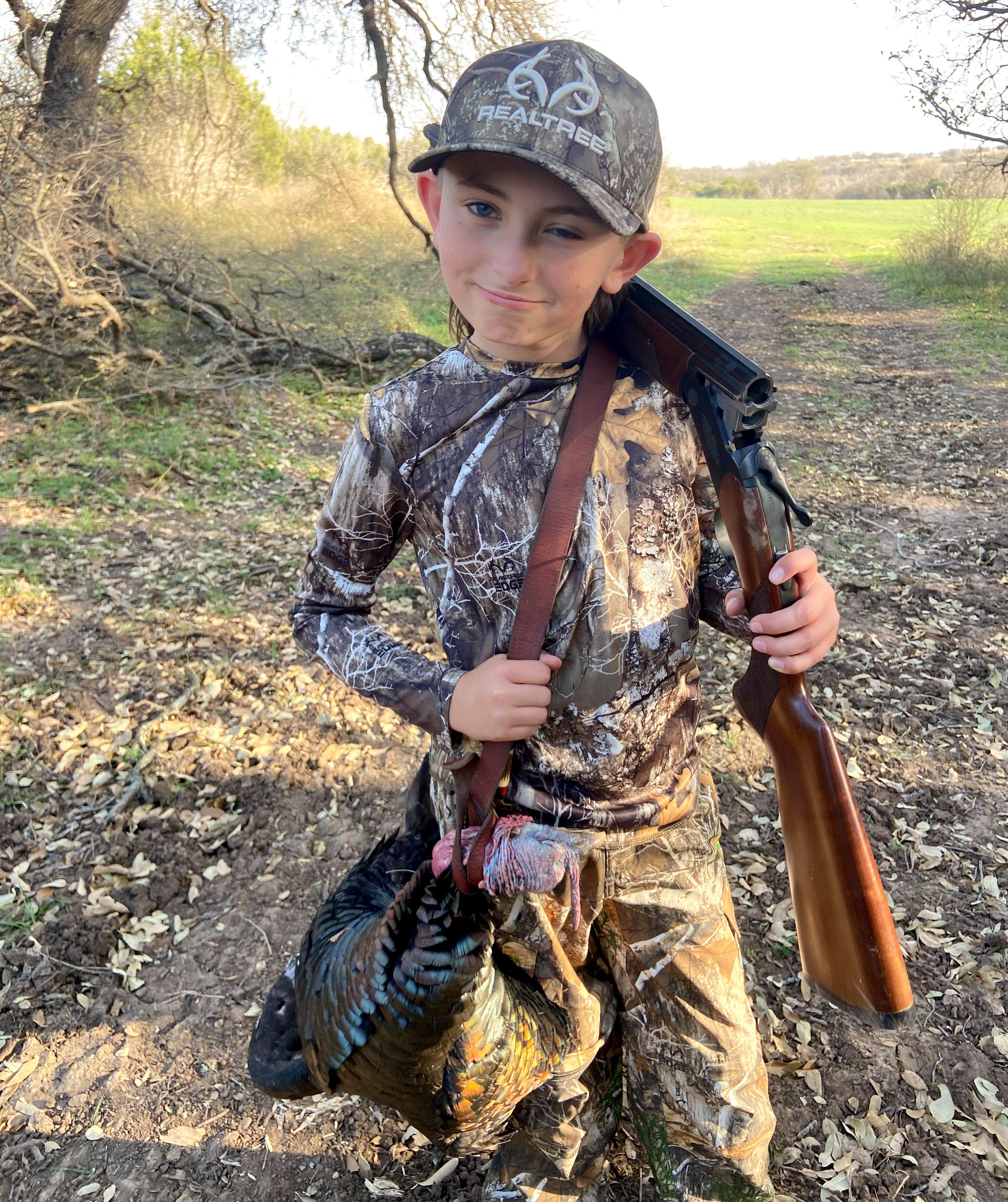
The over/under shotgun platform offers several advantages for a turkey hunter. Image by Will Brantley.
As we approached a blind spot in the field, I told Anse to close the gun and be ready, just in case. Sure enough, when we peeked around the bend, the gobbler was just 30 yards away, still in half strut but already craning his neck and giving us the side-eye. I thought we were busted, but I instinctively put a hand on Anse’s shoulder and hissed, “There he is, kill him!”
To hear Anse tell it, from his vantage he could see the bird’s head and beard, but a blackberry bush had his target partially obstructed. I saw the kid rock his head a bit to settle his cheek and heard the safety click just as the gobbler tucked a wing and putted. Boom! I thought he’d killed the tom outright, but then it flopped to its feet and into the field. Anse wasted no time firing his bottom barrel, and the gobbler was down for the count. Whoops and hollers followed, and as the adrenaline settled, one of the first things the boy said was, “I don’t think I’d have gotten him with my .410.”
And he was right. Anse shot his first gobbler at age 6 with a CVA Scout, which is the best single-shot .410 turkey gun ever made, as far as I’m concerned. He’s used that gun to tag a number of turkeys in Texas and Kentucky in the springs since, and I can’t speak highly enough of it.
But a single-shot .410 has limitations. Anse has grown since that first turkey season, and he’s become a wing-shooter, with a particular interest in waterfowl. Last summer, he asked for an over/under 20-gauge for his birthday. My buddy Phil Bourjaily, the legendary shotguns writer and occasional Realtree.com contributor, recommended the CZ Quail. It’s lightweight without being feathery, and it has a short length of pull. It’s a nice-looking gun, but not so nice (or expensive) that we’re afraid to scratch it. Anse used it all last fall to hunt squirrels, ducks, and geese, and back in February, he asked if he could take it turkey hunting this year instead of his .410. He’s tagged two turkeys with it so far — that one mentioned above, in Tennessee, and another one the weekend previous down in Texas.
But that’s not the only over/under shotgun that’s impressed me with its turkey hunting potential. I also picked up a new o/u last fall for waterfowling: a Browning Cynergy Wicked Wing 12-gauge decked out in Realtree Max-7. I shot that gun extremely well in the duck blind, and having used one of the Cynergy turkey models previously, I was excited to set my new gun up for gobblers this spring.

The author’s Browning Cynergy is likely to see some time in the turkey woods this spring.
Then a few weeks ago, during a visit to Realtree headquarters in Georgia, I spent some time patterning and reviewing a new 28-gauge Mossberg Silver Reserve Eventide turkey gun. This one was a special edition dipped in Realtree Original camouflage. Though it’s not available to the public just yet, it's a gun to watch for next spring. It sports compact 20-inch barrels and weighs just 6.5 pounds. Ours was fitted with a pair of Kick’s turkey tubes and a Bushnell red-dot sight, and it threw incredible patterns with Federal’s new 3-inch, 1½-ounce Heavyweight TSS turkey load.
I still have several favorite semi-auto, pump-action, and single-shot turkey guns, and I’m not selling them off. But this spring seems to be one of the over/under for me, and the more time I spend with them in the turkey woods, the more sense they seem to make. If you’re considering trying one yourself, here are a few good reasons why you should.
Don’t Miss: THE ULTIMATE TURKEY GUN PATTERNING TEST
INSTANT FOLLOW-UP SHOT
I have seen gobblers saved by “clicks” three times now in my turkey hunting career. All three were hard-earned opportunities at longbeards inside 25 yards, and the sounds of those clicks were enough to cause nightmares. Once, a weak firing pin spring in an old pump-gun was to blame. On another, the bolt on an inertia-driven autoloader wasn’t quite seated. And on the most recent, I had a dud shell — brand new, out of the box — that simply would not fire. With a repeating gun, some movement and noise are required to re-cock the gun and recover for a second shot — and movement and noise are a problem in the turkey woods.
But what happens if an over/under goes click? You simply pull the trigger again.
YOUTH-FRIENDLY PLATFORM
Countless new hunters, including my son, have been successful on spring gobblers with .410 turkey guns. Most of those guns are single-barrels, which are great for new hunters, from a safety standpoint. They can be broken open for completely safe carry, and then quietly closed when needed.
The downside to many of those guns is the exposed hammer, which must be manually engaged before shooting. Again, that requires movement and noise (although slight). But safely lowering the hammer on a live round is the bigger challenge for little hunters, in my experience. Transfer-bar safety mechanisms make the chances of a negligent discharge minimal, but it’s still possible. It took Anse a few years of hunting before he was comfortable manually lowering an exposed hammer on his own. An over/under can still be broken open for safe carry, and a sliding tang safety is much easier to understand and operate for a new hunter.
TWO BARRELS, TWO CHOKES
For all the handwringing we turkey hunters go through to achieve good long-range patterns, 80% of the turkeys I shoot are inside 30 yards. Virtually all of the ones I’ve managed to miss clean have been inside 10 yards. For that reason, I have a turkey tube in the bottom barrel of my Browning Cynergy, and a factory modified in the top. The more open choke still throws a turkey-killing pattern out to 40 yards with TSS, but it’s more forgiving in close quarters.
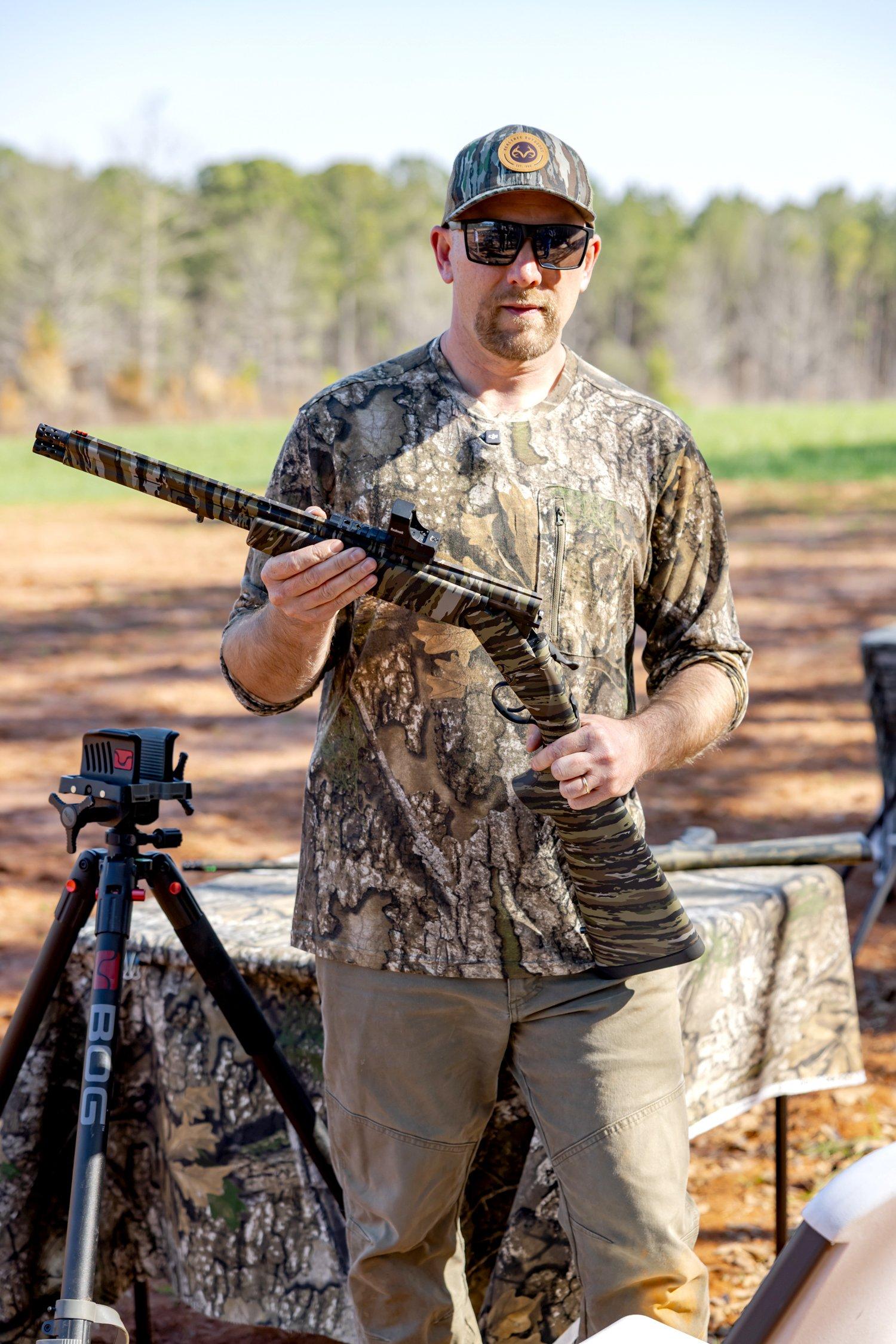
Having two barrels allows the hunter to customize his or her choke selections. You can run a turkey tube in both, or a turkey tube paired with a slightly more open selection for more open patterns on fast follow-up shots. Image by Realtree
QUIET LOADING AND UNLOADING
Some places, including most public hunting areas, require guns to be unloaded and cased when in transport. Yet, many of the gobbling turkeys I locate in such places are from the roadside, next to my pickup. Hearing a gobbler fire off 100 yards in the timber, and then having to noisily rack the bolt on my autoloader before going after him, has always made me cringe a bit. With the over/under, you’re in business after a few muffled clicks. Same goes when crossing a fence or obstacle. Drop the shells out, and there’s simply no chance of an accident happening.
EASY POINTING, FUN TO SHOOT
There’s a good reason why competitive clay shooters use o/u guns almost exclusively: they last forever, and they’re easy to hit with. Over/under guns tend to point and swing well for most shooters, which is a real asset on moving targets, but it doesn’t hurt a thing in the turkey woods, either. These are also guns that will cycle with any load, heavy or light, almost regardless of how seldom the gun has been cleaned.
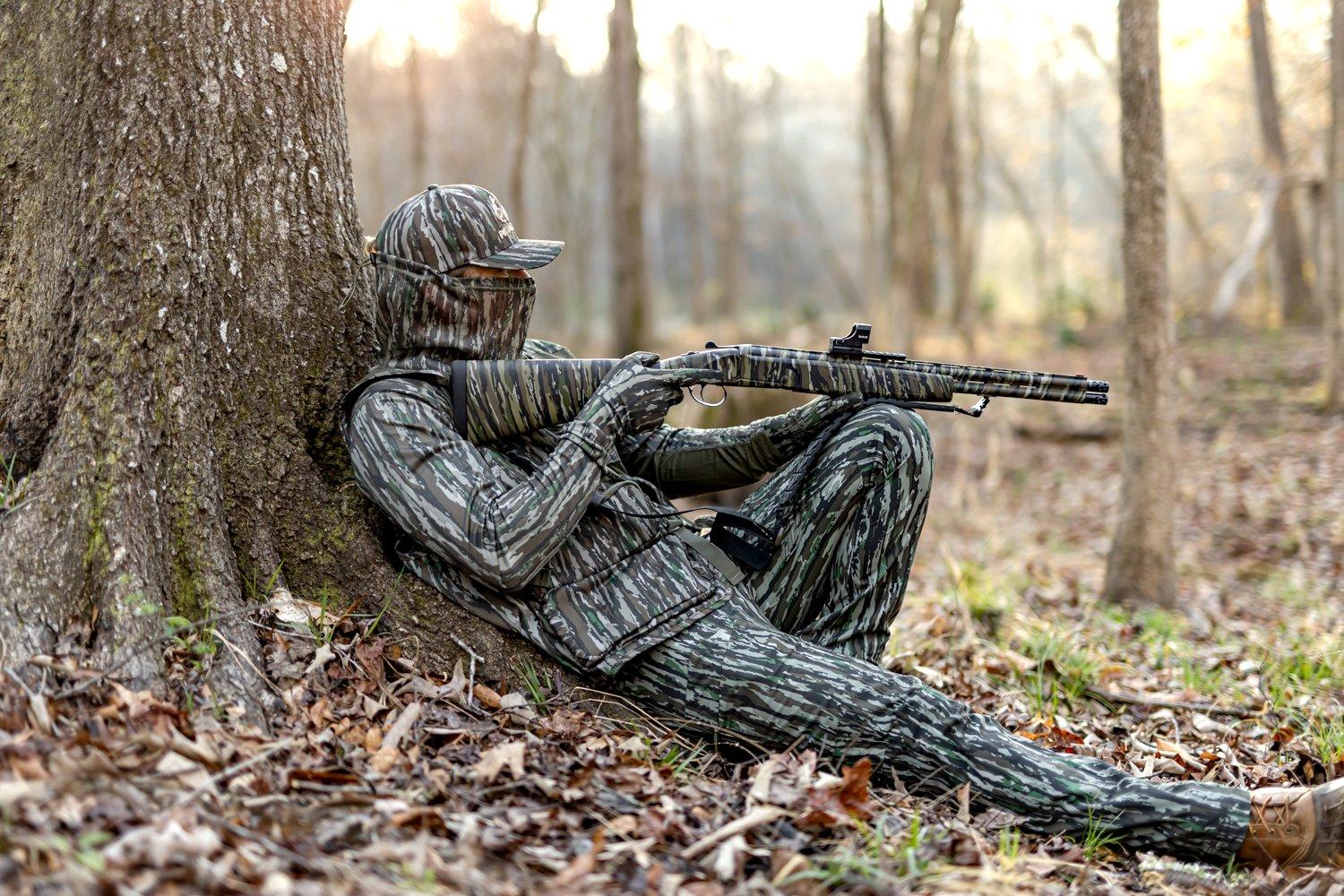
A compact over/under shotgun is easy to point and shoot, even in confined spaces, making it perfect for turkey hunters. Image by Realtree
Many think of highly polished — and highly priced — competition guns when they envision over/unders, but options like my Browning Cynergy and the Mossberg Silver Reserve Eventide have synthetic stocks and rugged weatherproof, camo finishes. They don’t look as fancy, but it’s hard to envision a more utilitarian hunting tool that can be used on a wider variety of critters regardless of the conditions. There’s certainly not a thing wrong with owning a dedicated turkey gun with an optic. But I like to simply put a turkey tube in my duck gun come spring and keep right on hunting with the platform that I use year-round. Familiarity breeds confidence.
Don’t Miss: HOW TO TUNE AND RUN A TURKEY BOX CALL
WHAT ABOUT POINT OF IMPACT?
The biggest drawback to over/unders for turkey hunting is in how the barrels are regulated. Many wing-shooting guns are regulated for a 60/40 pattern, which means that 60% of the pattern from the top barrel will shoot above the gun’s point of aim. In other words, the top barrel shoots high. That can be a benefit for some clay games and wing-shooting, but it’s not great for carefully centering a tight pattern on a gobbler’s head and neck.
Fortunately, from the guns I’ve tried, this has been a minimal issue. Anse’s CZ 20-gauge shoots to point of aim with the top barrel and slightly low with the bottom. So, we have the turkey tube in his top barrel and a factory full in the bottom. I don’t want him worrying over selecting barrels when a turkey is coming in, so his safety selector stays on the turkey tube. If he needs a fast follow-up — as was the case on that gobbler in the story — the standard full choke provides a slightly more open pattern.
The top barrel on my Browning Cynergy seems to hit about 6 inches higher than the bottom barrel, which shoots to point of aim. So my turkey tube is on the bottom, and a modified is on top. Patterning an over/under turkey gun requires a little more fussing than patterning a shotgun with just one barrel, but in some ways, it’s satisfying to work through both barrels with various choke tubes and loads before ultimately settling on the combo that gives you the most confidence in the woods.

